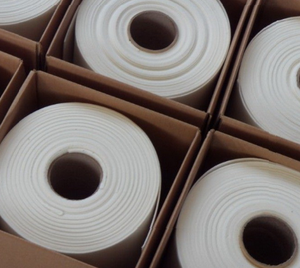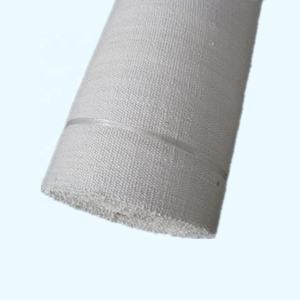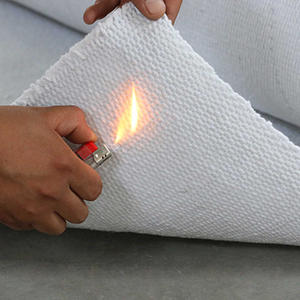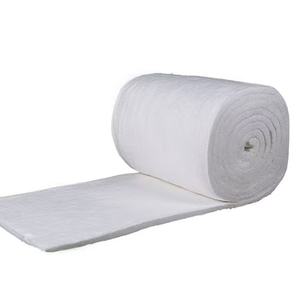Professional industry ceramic supplier, silicon nitride, silicon carbide, aluminum nitride and any other kinds of ceramics.
PRODUCT PARAMETERS
Description
Overview of Ceramic fiber insulation spacers
Ceramic fiber insulation spacers is a lightweight, high-temperature insulation material composed primarily of alumina-silica. It is manufactured through a melting and spinning or blowing process, resulting in a flexible, wool-like textile. This material is engineered to provide exceptional thermal management, conserving energy and protecting equipment in extreme temperature environments across various industries.
Features of Ceramic fiber insulation spacers
-
Excellent Thermal Stability: Withstands continuous operating temperatures up to 1260°C (2300°F) and higher for certain grades, with minimal shrinkage.
-
Low Thermal Conductivity: Provides highly efficient insulation, reducing heat loss and improving energy efficiency.
-
Lightweight & Low Heat Storage: Offers low thermal mass, enabling rapid heat-up and cool-down cycles for improved process control and energy savings.
-
Thermal Shock Resistance: Highly resistant to damage from rapid temperature changes.
-
Excellent Flexibility & Resilience: Can be fabricated into blankets, boards, papers, and textiles to fit complex shapes and applications.
-
Good Chemical Stability: Resists attack from most corrosive agents, except strong alkalis and hydrofluoric acid.
Specification of Ceramic fiber insulation spacers
Ceramic fiber insulation spacers are special pieces. They are made from high-temperature ceramic fiber materials. These materials are very light and fluffy. They handle intense heat well. Spacers are used in many industries. They help manage heat inside furnaces and ovens. They keep things apart. They create a gap between hot surfaces and insulation layers. This gap is important. It lets heat escape slowly. This stops the outer shell from getting too hot. It protects the equipment. It saves energy too. The spacers are very strong. They do not break down easily in high heat. They resist thermal shock. This means they handle fast temperature changes without cracking. They are non-combustible. They do not burn. This makes them safe for hot environments. They are also chemically stable. Most chemicals do not harm them. This is good for harsh industrial processes. The spacers come in different sizes and thicknesses. You can choose the right one for your needs. They are easy to install. Workers can cut them to fit specific spaces. They are used in kilns, boilers, and heaters. They are placed between the hot wall and the insulation blanket or board. They ensure the insulation works properly. They help maintain consistent temperatures. They make equipment last longer. They reduce maintenance costs. They improve overall efficiency.
Applications of Ceramic fiber insulation spacers
Ceramic fiber insulation spacers are simple parts. They work in high heat. These spacers create gaps between hot components. They stop heat from moving through metal parts. This protects the structure and saves energy.
Factories use these spacers a lot. Furnaces need them. Kilns need them. Ovens need them. Any place with extreme temperatures uses them. They hold insulation blankets or modules in place. They keep things separated correctly.
Metal processing uses these spacers. They go between furnace walls and the outer steel shell. This stops the shell from getting too hot. It prevents warping. It protects workers from burns. Heat treatment furnaces rely on them. So do forging ovens.
Glass factories need ceramic fiber spacers too. They are vital around melting tanks. They separate the hot tank from the building structure. This keeps the building safe. It allows the tank to expand without damage. Kiln cars in glass plants use them between layers.
Ceramics manufacturing uses spacers heavily. Kilns for firing pottery and tiles get very hot. Spacers support the insulation. They create air gaps. This improves insulation performance. It lowers fuel costs. It helps kilns last longer.
Chemical plants use these spacers. Reactors and heaters operate at high temperatures. Spacers insulate pipes and vessels. They stop heat loss. They protect surrounding areas. They are chemically resistant. This is important in harsh environments.
Power generation uses ceramic fiber spacers. Boilers and exhaust systems face intense heat. Spacers help insulate ducts and piping. They reduce surface temperatures. They save energy. They improve safety around hot equipment.
Refineries use them. Crackers and furnaces need good insulation. Spacers hold refractory linings. They provide separation. They help manage heat flow. They reduce maintenance needs. They improve operational efficiency.
Company Profile
Tanki New Materials Co.Ltd. focus on the research and development, production and sales of ceramic products, serving the electronics, ceramics, chemical and other industries. Since its establishment in 2015, the company has been committed to providing customers with the best products and services, and has become a leader in the industry through continuous technological innovation and strict quality management.
Our products includes but not limited to Aerogel, Aluminum Nitride, Aluminum Oxide, Boron Carbide, Boron Nitride, Ceramic Crucible, Ceramic Fiber, Quartz Product, Refractory Material, Silicon Carbide, Silicon Nitride, ect. please feel free to contact us.

Payment Methods
T/T, Western Union, Paypal, Credit Card etc.
Shipment Methods
By air, by sea, by express, as customers request.
5 FAQs of Ceramic fiber insulation spacers
What are ceramic fiber insulation spacers?
Ceramic fiber insulation spacers are small pieces made from ceramic fiber materials. They are designed to create a gap between hot surfaces and other components. This gap prevents direct contact. Direct contact can cause heat damage or inefficient insulation. The spacers hold things apart safely.
Why use ceramic fiber spacers instead of metal?
Metal spacers conduct heat very well. They transfer heat from hot areas to cooler parts nearby. This defeats the purpose of insulation. Ceramic fiber spacers are different. They resist high temperatures extremely well. They also block heat transfer effectively. This keeps heat where it belongs. They help insulation work better.
How hot can these spacers get?
These spacers handle very high heat. They work reliably in temperatures reaching 2300°F (1260°C). This makes them suitable for demanding applications. Furnaces, kilns, and high-temperature piping often use them. They maintain their shape and insulating properties even under intense heat.
How do I install ceramic fiber spacers?
Installing these spacers is straightforward. Place them between the hot surface and the component you need to protect. Common attachment methods include adhesive or simple mechanical fasteners. Ensure the spacer fits snugly. It should not move out of position easily. Proper placement is key for good performance.
Are ceramic fiber spacers safe?
Ceramic fiber spacers are generally safe for their intended use. Handle them with care during installation. The fibers can be irritating. Wear gloves and a dust mask when cutting or handling them. Once installed and covered by other insulation layers, they pose minimal risk. Follow standard safety procedures.
REQUEST A QUOTE
RELATED PRODUCTS

High-temperature 0.5mm, 1mm, 3mm, and 6mm thick ceramic fiber paper, bio-ceramic fiber.

High-Temperature Ceramic Fiber Blanket Insulation: 1260°C Ceramic Fiber Wool Roll Insulation.

Factory-made fireproof ceramic Wide, high-temperature resistant ceramic fiber

High-quality Ceramic Fiber Cotton for industrial furnaces.

Hot-ing refractory material 1260 fireproof Ceramic Fiber tissue paper, biosoluble Ceramic Fiber paper 4mm



